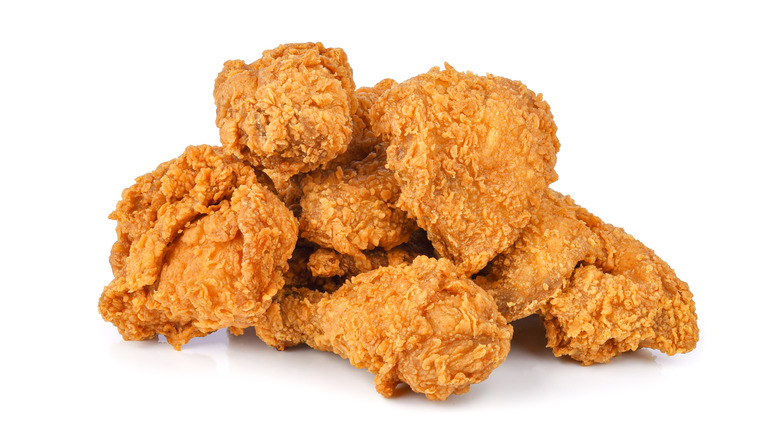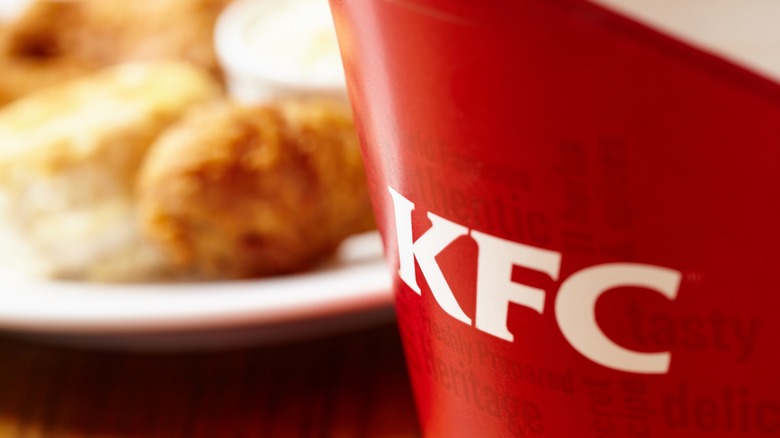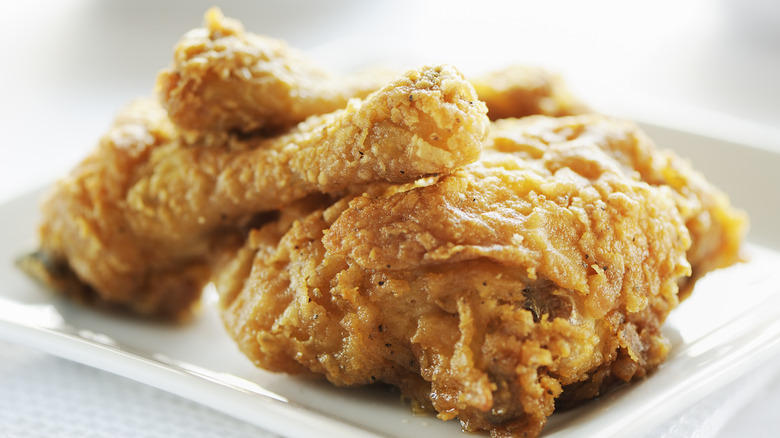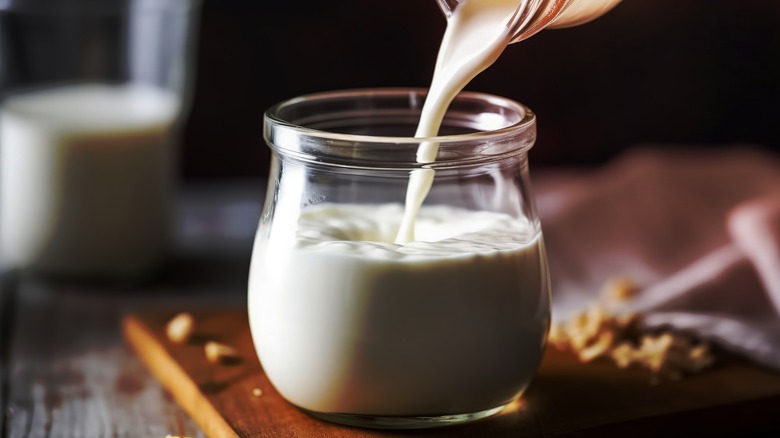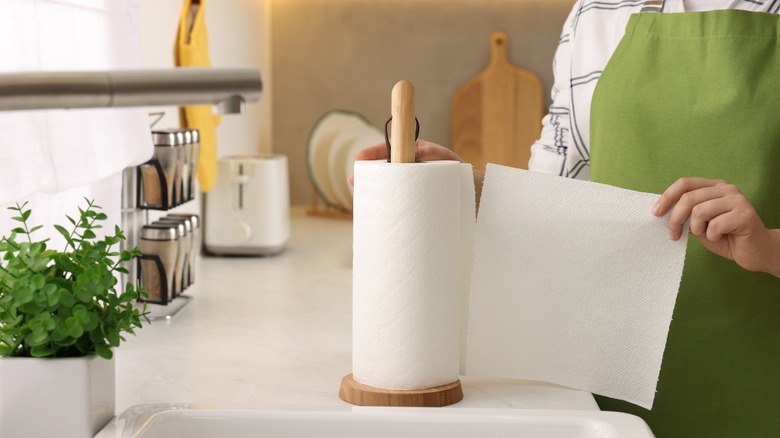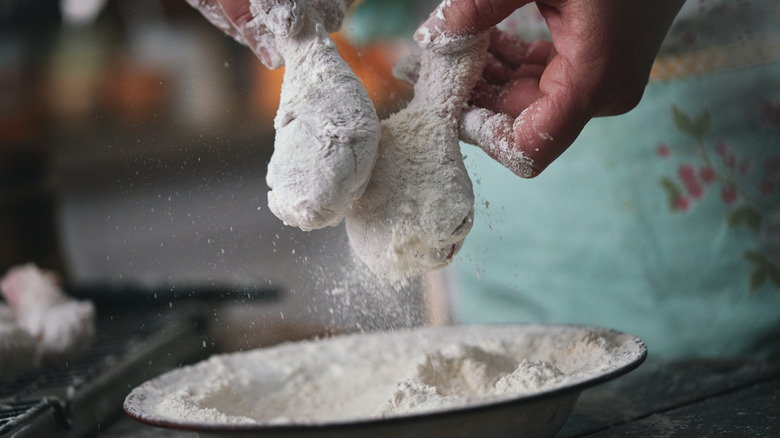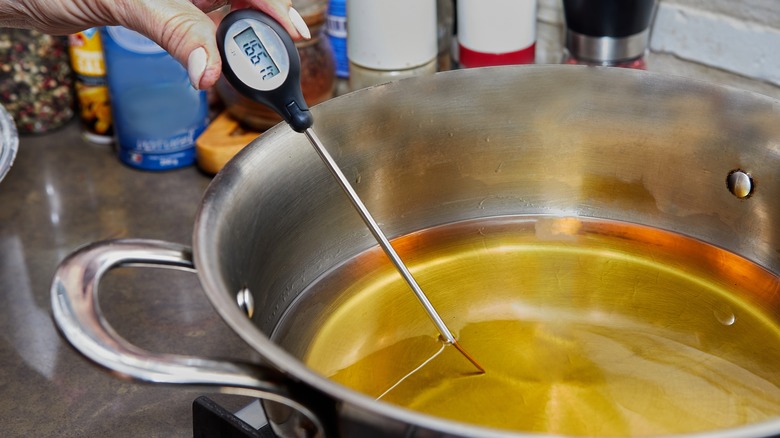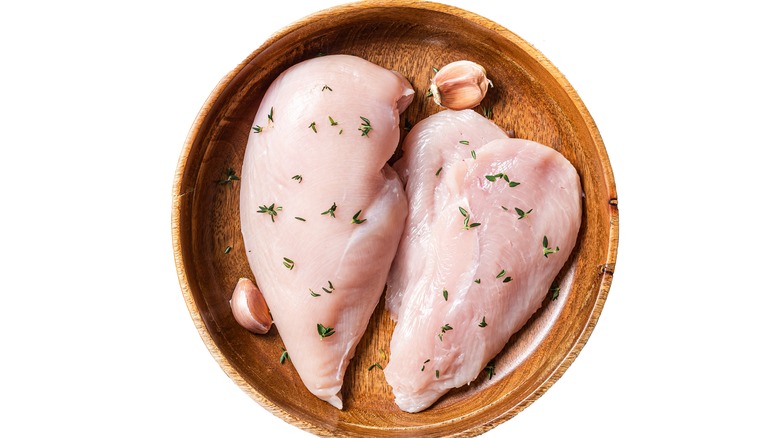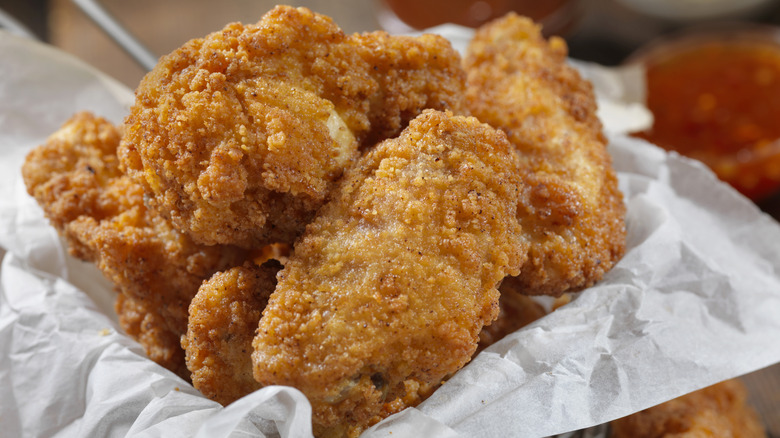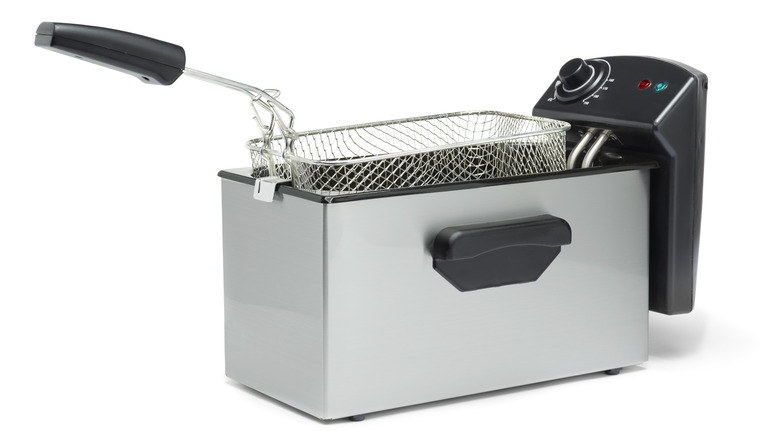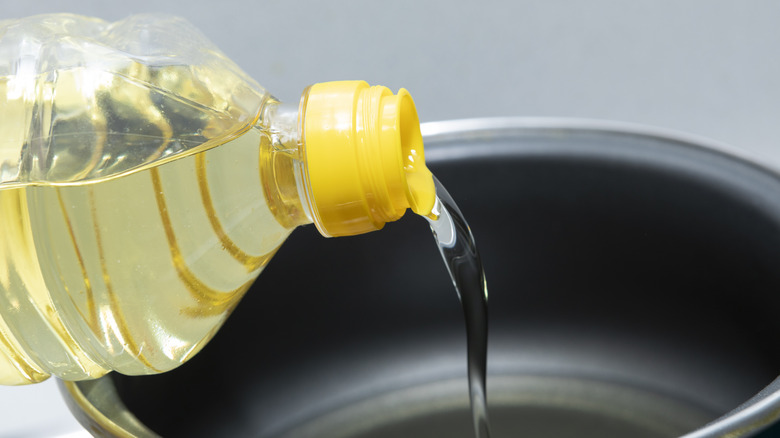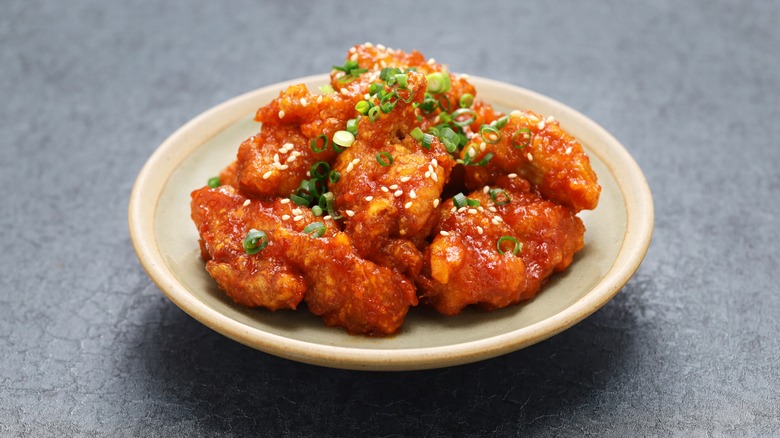Don't Fall For These 12 Fried Chicken Myths
Aside from apple pie, of course, is there anything more American than fried chicken? This dish is beloved across the nation, especially in the South, where entire fast-food chains are devoted to it. Home chefs also love making fried chicken because it is simple to whip up and, in the immortal words of Colonel Sanders: "it's finger-lickin' good." However, there are a lot of myths and misconceptions floating around about this juicy, crispy style of chicken, and we're here to set the record straight.
According to US Foods, fried chicken can be found on 74% of American and Southern restaurant menus. But did you know that it also appears on 61% of Caribbean menus, as well as 80% of menus from Chinese restaurants?
Fried chicken can be so much more than just drumsticks. There is a lot to learn about this dish, especially for cooks hoping to make a great batch at home. Let's take a deep dive into that vat of frying oil and see what we can learn about one of the world's favorite ways to eat chicken.
1. Myth: Fried chicken is an American invention
One of the most-believed myths about fried chicken is that it was invented in America. Some might even erroneously attribute its creation to the founder of KFC. After all, KFC is one of the most famous restaurants in the fried chicken business. In actuality, the technique of making fried chicken is something that has developed over centuries before arriving in the United States.
This may sound like a myth itself, but there were actually mentions of fried chicken in ancient Roman cookbooks. They describe cooking chicken in hot oil, although it is highly unlikely that they coated it with the same batter we use today.
There are two stories of how fried chicken arrived in the U.S. Some say that African slaves played a big part in bringing over the dish, as they brought with them seasonings and unique cooking methods for it. Scottish immigrants had a hand in "inventing" American fried chicken as well, as they brought over their tradition of deep-frying chicken. This deep frying, combined with the African style of preparation, created the version we know and love today.
2. Myth: You can only fry drumsticks
When most people think "fried chicken," their minds probably conjure up an image of a nice, crispy chicken leg. But these legs — also known as drumsticks — are not the only part of a chicken that can be fried. The entire chicken can be cooked this way — just not all in one big piece.
You can fry the thighs, wings, and breasts of the chicken in much the same way you would the drumsticks, but first, you have to cut the chicken into individual pieces. It is not recommended to attempt to batter and fry a full chicken all at once, as this is not only dangerous but wouldn't cook very well. So, you have to split it up, taking extra care to cut each breast in half horizontally to make them thinner, so that they will cook thoroughly and evenly. While not always strictly necessary, it may also be a good idea to separate the thighs from the legs if the chicken is on the larger side, as this will help to make them more manageable. And, if you don't want to stop there, you can even bread and fry chicken livers and gizzards as well.
3. Myth: You don't need buttermilk
Some fried chicken enthusiasts can't say enough about brining a chicken. Many say that this is the key to making a chicken moist, but others say that this is not necessary. What is necessary — at least if you want your chicken to be deliciously crispy and tasty in the Southern tradition — is to use seasoned buttermilk.
Buttermilk brings a lot to the table here. It not only brings a nice, rich flavor, but it also enables the flour breading to stick to the chicken more evenly. This buttermilk can be used in two ways: as a type of marinade (in which the chicken should be submerged for between 4 and 24 hours) or as a part of the breading process. The former gives the buttermilk time to seep into the chicken itself, but the latter is perhaps more important because dipping the chicken into buttermilk before coating it with flour allows for a more even, complete breading. No one wants to eat fried chicken with bald spots, do they?
4. Myth: There's no need to dry chicken before frying it
First things first: There is no need to wash your raw chicken. For any reason. Ever. Just don't do it. While you may think that this helps get rid of the risk of salmonella that is inherent in nearly every type of poultry, it actually increases the risk of contracting a foodborne illness, as it helps the bacteria on the chicken spread. However, you should pat your chicken with a clean paper towel before cooking it.
Not only does this help to remove anything you may want to take off of the chicken, such as a lingering feather, but it is also essential for the frying process. If the chicken is too wet with its juices when you start coating it with flour or buttermilk, the breading ingredients won't stick. This makes for an uneven coating that may potentially slip off as it cooks. All you need is a gentle pat (no scrubbing necessary) and the chicken will be ready for dredging.
5. Myth: You need to dredge the chicken twice
Have you ever eaten a piece of fried chicken that just about broke your tooth? The breading was probably thick and hard and solid-looking, and it took far too long to bite it through to the chicken underneath. This is what happens when you dredge your chicken twice.
Sure, everyone's favorite part of fried chicken is that delicious crispy coating, but this is a case where too much of a good thing is bad. Trying to double up on the flour to create a second layer of breading will not make a better piece of fried chicken — in fact, it will most likely only lead to disaster. Your chicken should only make one pass through the flour, otherwise it won't cook properly. The chicken inside will no longer be the star of the show either, and the people who you are serving it to will be too busy wondering if they need a dentist to be able to enjoy it.
6. Myth: There's no need to check the temperature when frying
Frying chicken in oil may seem simple: Just put some oil in a pan on the stove or in a deep fryer, wait a couple of minutes, then start tossing in the chicken, right? Wrong. If your oil is not hot enough, the chicken will get soggy because it will have to stay in the oil longer than necessary. If it is too hot, the outside of the chicken may cook before the inside.
Generations of cooks have passed down the "wisdom" that tossing a bit of flour into the oil to see if it bubbles is the best way to check if the oil is ready for frying, but this is not wisdom at all. It is another myth. One of the biggest issues home cooks have with fried chicken is that it often comes out either soggy or overcooked, and this is why. Oil needs to be a precise temperature to fry perfectly, and the only way to know if it has hit that temperature is to check it with a thermometer. You should check it before the chicken goes in, as well as in intervals as it cooks to make sure that the oil is maintaining the ideal temperature of 350 degrees Fahrenheit.
7. Myth: You don't need a breading
Okay, we know that fried chicken is not the healthiest lunch option out there. So, it makes sense that some people have attempted to make a seemingly more diet-friendly option by frying chicken with no breading. While usually skinless chicken breast is seen as a healthy option, in this case, it will taste pretty awful.
The crispy crust on the chicken is not just for aesthetic reasons or to add extra flavor (and carbs) to the chicken. It is also there to keep the meat inside moist. If you leave off the flour coating, you leave out what is arguably the most important part of the recipe.
Deep frying works best with a breading, so leaving this part out altogether will result in very dry chicken. Theoretically, you could take the outer coating off after it has been cooked and only eat the juicy chicken inside (we're sure you can find someone who would be willing to eat that tasty crust for you), but at the end of the day, it is pretty tough to make fried chicken into a diet food. Perhaps it's best to just enjoy it as an occasional treat.
8. Myth: Your chicken doesn't need rest
It's common sense to wait a minute or two before taking a bite of a chicken if it just came out of the fryer. But aside from the danger of scorching the roof of your mouth, there are some other good reasons to wait as well.
Fried chicken needs to rest after frying to give it time for the oil to drain off and for the chicken itself to become tender. During this time, the collagen inside breaks down, which means that it will practically melt in your mouth later. To rest it properly, set it on a wire rack placed over a baking sheet. Line that baking sheet with paper towels to catch the drippings, and leave the chicken on the rack for a minimum of 10 minutes after removing it from the oil. This is also a good time to check the internal temperature of the chicken with a thermometer. The recommended safe temperature is 168 degrees Fahrenheit, but that temperature will rise as the tissues inside break down, resulting in a final temperature of around 175 degrees Fahrenheit.
But this is not all the resting your chicken should be doing! It is also important to let the chicken rest for a few minutes after you have breaded it so that the coating sticks to the meat better and doesn't slide off in the oil.
9. Myth: You need a deep fryer to fry chicken
Deep fryers can be both expensive and intimidating to the amateur chef. If you have never fried chicken before, however, you may think that they are your only option. Well, we're here to tell you that you don't need a deep fryer to deep fry!
While a deep fryer may be made for the specific purpose of deep frying things, chances are you already have a perfect alternative in your kitchen cabinet. Both thick, cast-iron skillets with heavy bottoms and Dutch ovens make great stove-top deep fryers. They may even be better than a deep fryer, as the cast iron they are made from helps to hold in heat and keep the temperature consistent throughout the cooking process. The only potential downside is that skillets and Dutch ovens don't have a temperature setting like most newer deep fryers, but this is a problem easily solved with a thermometer.
10. Myth: Any oil will work for frying chicken
Oil makes a huge difference in the taste, texture, and overall cooking of fried chicken. While you might think that using something like olive oil would be a good idea because it tastes great, this is a mistake. Using that much olive oil just to fry something is incredibly expensive and honestly just a huge waste of valuable food (my Italian husband wants to cry just thinking about it), but that's not even the biggest issue here. If you were to fry chicken in olive oil, the finished product would taste bitter. This is because olive oil's smoke point is too low.
Instead of olive oil, try peanut oil, vegetable oil, or canola oil. These three are cheaper, have a neutral flavor, and they have a high smoke point. The smoke point, as one may guess, is the temperature at which oil starts to smoke, which is important because you don't want your kitchen (and your chicken) to fill with smoke while you're frying. Since olive oil's smoke point is low, that smoke can go into the chicken and change the taste. The other oils listed have to reach much higher temperatures to start smoking, so they will remain as they are while cooking.
11. Myth: There is only one kind of fried chicken
Another huge myth about fried chicken is that there is only one kind: the American kind. While the U.S. is world-renowned for its crispy, juicy Southern-style fried chicken made with a brine and/or buttermilk, a flour coating complete with a whole host of herbs and spices, and a dip in the frying oil, there are plenty of other fried chicken varieties out there to try.
Take, for instance, Indonesian ayam goreng, which is a fried chicken dish made with an intense marinade, followed by herbs and spices unique to Indonesia. There is also Japanese karaage, which is also marinated but is coated with potato starch instead of flour before deep frying. In Korea, yangnyeom-tongdak is not just crispy, but also spicy and sweet, making it much different from its American counterpart. This one is also usually fried twice to make it even crunchier and served with a glaze. Even Italy has a version of fried chicken, pollo fritto, which is much simpler and usually consists of juicy chicken coated with flour, salt, pepper, and perhaps a pinch of paprika. So, good news: Basically wherever you go in the world, you can enjoy fried chicken while you're there!
12. Myth: It's okay to eat fried chicken every day
We've talked a lot in this article about how awesome fried chicken is, and there's no denying that it is delicious. It is also, however, a fried food, which means it is not ideal for daily consumption.
Fried foods like chicken have been linked to numerous chronic health problems like obesity, diabetes, and heart attacks. And, thanks to a 2020 study published in Clinical Nutrition, we now know that fried foods can also be linked to coronary artery disease.
One important thing to note here, though, is that this correlation is dependent on the "dose" of fried foods one consumes. Eating high amounts of fried food can lead to this and other problems, but sharing a bucket of fried chicken with your family every once in a while is less likely to cause permanent issues. Like with all good things, fried chicken is best enjoyed in moderation, which also serves to make you appreciate it even more.
